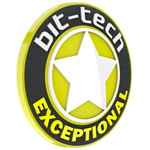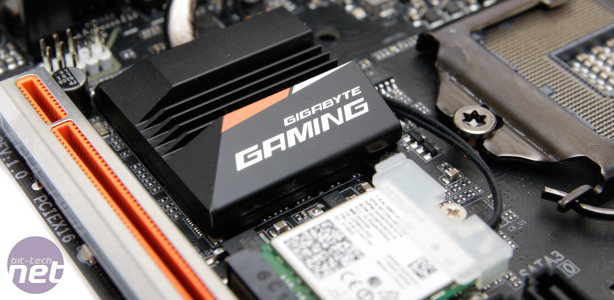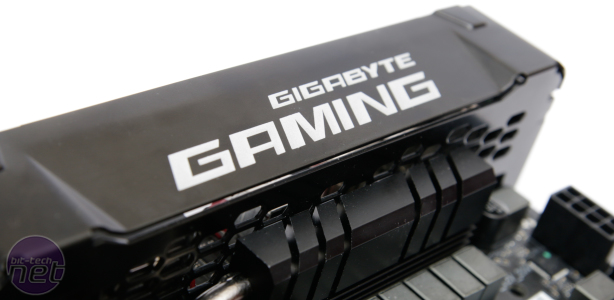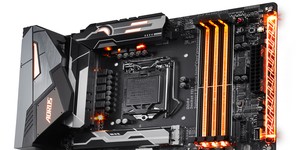
Overclocking
Most Z270 motherboards we've reviewed have done pretty well when it comes to overclocking our in-house Core i7-7700K, and 5GHz is usually an easy target requiring less than 1.4V. The best result came from Asus' ROG Strix Z270F Gaming, which needed just 1.33V to get to the magic 5GHz. However, while we needed to raise load-line calibration to the extreme mode, we needed to apply a vcore of just 1.3V to get to a rock solid 5GHz - the lowest voltage we've seen so far from a Z270 motherboard. This bodes very well for using the Z270N-Gaming 5 at the core of a high-end overclocked PC.To see an in-depth look at Gigabyte's latest software and EFI, head over to our previous coverage here.
Click to enlarge
Performance Analysis
Starting with the audio performance, an area that Gigabyte has been very strong in recently, and the Z270N-Gaming 5 didn't disappoint. It soared to a dynamic range of 112.4 dBA and noise level of -107.1 dBA, both better results than its cheaper sibling and MSI's Z270I Gaming Pro Carbon AC and a match for most of Asus' ATX boards too.Click to enlarge
Thankfully, the fact we enabled load-line calibration didn't lead to massive power numbers. The Z270N-Gaming 5 posted the lowest overclocked power draw of any Z270 motherboard we've tested thanks to its lower vcore and an idle power draw just as impressive. The load power consumption was high, though, mixing things up with ATX boards.
Performance elsewhere was excellent, with chart-topping results in many tests equalling or bettering the best results we've seen. Grunt in the M.2 storage test was the only mid-table result, with numbers some 40MB/sec slower than the best results we've seen, although this isn't much to worry about given we're talking about speeds in excess of 3,300MB/sec.
Click to enlarge
Conclusion
What we're looking at here is a board that nails a sweet spot in terms of price and performance, and it looks pretty darn good too. The Z270N-Gaming 5 is £10-15 cheaper than the Asus ROG Strix Z270i Gaming and is also the best Z270 overclocking board we've seen so far. Couple that with some unique and appealing aesthetics, useful software, and fan control, and your choice of mini-ITX motherboard just got a lot more complicated. The Asus board may offer an additional M.2 port, a better EFI, and more extensive software suite, but Gigabyte has done a great job here with plenty of points going to the Z270N-Gaming 5. If the Asus board doesn't float your boat or you need an onboard USB 2.0 header, then this is a fantastic alternative that's cheaper too.

MSI MPG Velox 100R Chassis Review
October 14 2021 | 15:04











Want to comment? Please log in.